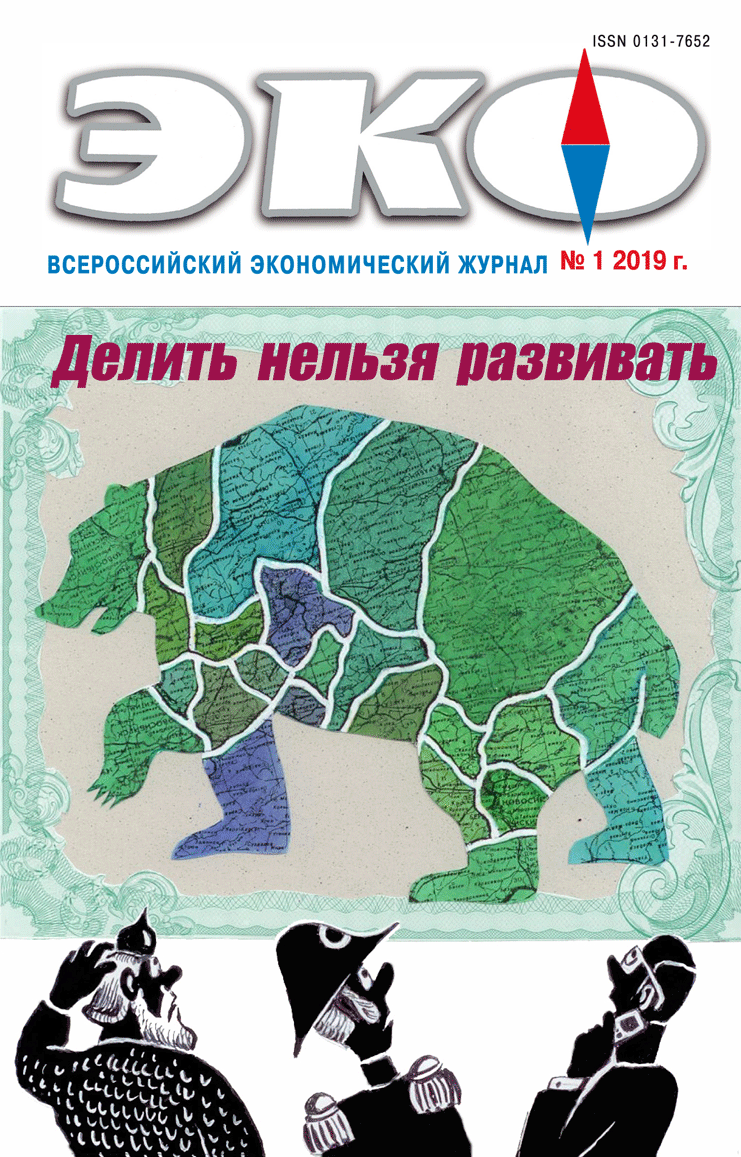COVER STORY: DIVIDE OR DEVELOP
Published 2019-01-08
Keywords
- Spatial development,
- supporting zone,
- the Arctic,
- rating score,
- transport framework
- natural resources ...More
How to Cite
1.
Dmitrieva Т, Buryy О. Arctic Supporting Zones: the Ranks and the Projects. ECO [Internet]. 2019 Jan. 8 [cited 2026 Jan. 19];49(1):41-59. Available from: https://ecotrends.ru/index.php/eco/article/view/1749
Abstract
The article examines some different definitions of the Arctic supporting zone in the national legislative instruments and names zones’ main features. They are: general and social functions – to develop communication and resource potential, to improve quality of life; organizational setting – “project of projects” on the “special territory”; economic model – government-private partnership; spatial structure – transport and industrial framework, consisting of mail lines, hubs and various centers; type – the level of natural resource development, the maturity of specialization, the center and periphery ratio, the specifics of financial mechanisms. The authors have made the first comparative-rating analysis of those zones. The Methodology includes choice of a municipality as an operating unit, calculation of zones’ indicators summation of municipal indicators, use of the Municipal Passports data, rating calculation for each indicator and average overall. The rating allowed determining the factors of strong zone differentiation, which affect the socio-economic development of the Arctic regions. The region’s proposals for the projects in zones are considered. The authors find important to analyze of the mechanisms for the implementation of anchor and other investment projects.References
- Андреева Е. Н. Опорные зоны в Арктике: новые веяния в решении старых проблем //ЭКО. 2017. № 9. С. 26–41. DOI: 10.30680/ECO0131–7652–2017–9–26–41.
- Баранский Н. Н. Об экономико-географическом изучении городов // Избранные труды: Становление советской экономической географии. М.: Мысль, 1980. 287 с.
- Дмитриева Т. Е. Оценка географических условий строительства в Коми АССР // Территориальные и межотраслевые проблемы развития Европейского Северо-Востока СССР. Сыктывкар. 1987. С. 31–47.
- Замятина Н. Ю., Пилясов А. Н. Российская Арктика: к новому пониманию процессов освоения. М.: УРСС, 2018. 400 с.
- Кондратьева В. И. Северо-Якутская опорная зона развития Арктической зоны России в Стратегии пространственного развития Российской Федерации // АРКТИКА. XXI век. Гуманитарные науки. 2017. № 1(11). С. 4–12.
- Криворотов А. К. Норвежское Заполярье: государственная политика и региональное развитие // ЭКО. 2017. № 8. С. 77–92. DOI: 10.30680/ECO0131–7652–2017–8–77–92.
- Крюков В. А. Арктика – каким приоритетам отдать предпочтение? // Проблемный анализ и государственно-управленческое проектирование. Вып. 6. 2014. С. 45–66.
- Крюков В. А., Крюков Я. В. Как раздвинуть рамки арктических проектов? // ЭКО. 2017. № 8. С. 5–32. DOI: 10.30680/ECO0131–7652–2017–8–5–32.
- Лаппо Г. М. Концепция опорного каркаса территориальной структуры народного хозяйства: развитие, теоретическое и практическое значение // Известия АН СССР. Сер. географическая. 1983. № 5. С. 16–28.
- Литовский В. В. Теоретико-географические основы формирования доминантного урало-арктического геоэкономического пространства и его инфраструктуры (для задач формирования многофункционального базисного опорного внутреннего и континентального моста России по оси «Север-Юг»). М.: ГЕОС, 2016. 398 с.
- Рабочие тетради. Выпуск 1. Арктическое право России: каким ему быть? / Отв. ред. Пилясов А., Замятина Н. 2017. URL: http://ctbooks.ru/book/113484.
- Ресурсные регионы России в «новой реальности» / Под ред. акад. Кулешова В. В. Новосибирск: Изд-во ИЭОПП СО РАН, 2017. 308 с.
- Смирнова О. О. Государственная стратегия развития «опорных зон» Арктики: критерии и методические подходы к отбору инвестиционных проектов // Успехи современной науки. 2017. Т. 3. № 1. С. 82–85.
- Смирнова О. О., Липина С. А., Кудряшова Е. В., Крейденко Т. Ф., Богданова Ю. Н. Формирование опорных зон в Арктике: методология и практика // Север и Арктика. 2016. № 25. С. 148–157. DOI: 10.17238/issn2221–2698.2016.25.148.

